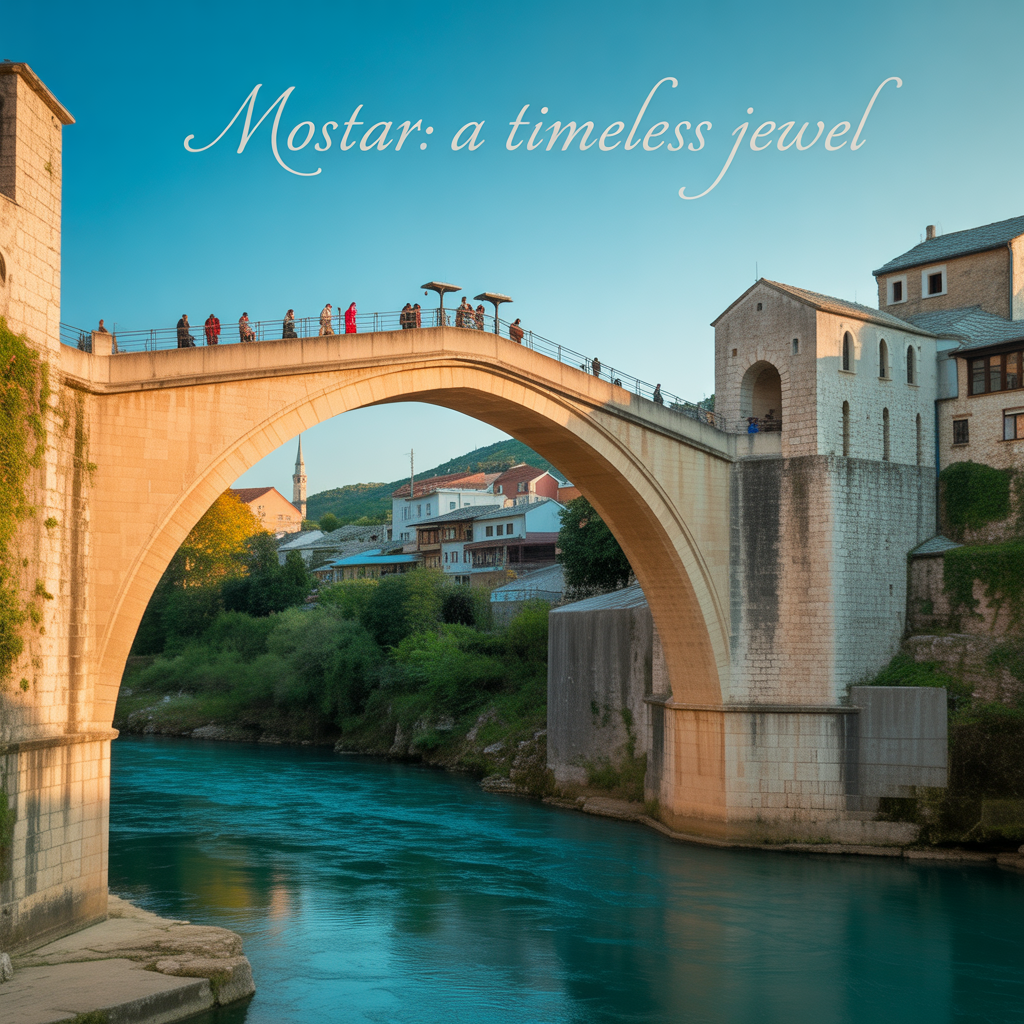Mostar, located in the heart of Bosnia and Herzegovina, is a city where history, culture, and natural beauty converge. Famous for its iconic Stari Most (Old Bridge) and centuries-old Ottoman architecture, Mostar offers an unforgettable travel experience for history lovers, adventure seekers, and cultural explorers. With its cobblestone streets, turquoise river views, and hospitable atmosphere, Mostar stands as a living museum of Balkan history.
Historical Significance of Mostar
Mostar’s history dates back to the 15th century when the Ottoman Empire transformed it into a bustling trade and cultural hub. The city’s name originates from the word “mostari,” meaning “bridge keepers,” referring to those who guarded the bridge over the Neretva River. Over centuries, Mostar has seen Ottoman, Austro-Hungarian, and Yugoslav influences, making it a fascinating mix of East and West.
The Iconic Stari Most in Mostar
No visit to Mostar is complete without witnessing the architectural marvel of Stari Most. Built in the 16th century by Ottoman architect Mimar Hayruddin, the bridge is a UNESCO World Heritage Site. Destroyed during the Bosnian War in 1993 and rebuilt in 2004, it now symbolizes reconciliation and resilience. Tourists gather to watch daring locals dive into the Neretva River from its 24-meter height, a tradition that dates back centuries.
Mostar’s Ottoman Architecture
Mostar’s Old Town is a maze of narrow streets lined with Ottoman-era buildings. The traditional stone houses, minarets, and arched bridges reflect the city’s Islamic heritage. Notable landmarks include the Koski Mehmed Pasha Mosque, which offers panoramic views from its minaret, and the Karadjoz Bey Mosque, one of the largest in the region. The combination of Islamic and Mediterranean architectural styles gives Mostar its unique aesthetic.
Cultural Life in Mostar
Mostar is a melting pot of cultures and religions, home to Muslims, Croats, and Serbs. This diversity is reflected in its food, festivals, and traditions. The annual Mostar Summer Fest attracts artists from across the Balkans, while local markets bustle with vendors selling handmade crafts, copperware, and traditional textiles. Street musicians add to the city’s lively atmosphere, making every stroll an immersive cultural experience.
The Neretva River in Mostar
Flowing through the heart of Mostar, the Neretva River is famous for its emerald-green color. The river’s cool waters provide a refreshing escape during the hot summer months. Many cafes and restaurants line the riverbanks, offering stunning views of Stari Most. Visitors can also enjoy rafting and kayaking, making the river a hub for adventure tourism.
Traditional Cuisine of Mostar
Food lovers will find Mostar a paradise of flavors. Local specialties include cevapi (grilled minced meat), burek (meat-filled pastry), and begova čorba (a rich chicken and vegetable soup). Desserts like baklava and Turkish delight reflect the Ottoman influence. Dining in Mostar often comes with scenic views, whether you’re in a riverside café or a traditional konoba (tavern).
Mostar’s War History and Memorials
The Bosnian War of the 1990s left deep scars on Mostar, both physically and emotionally. Many buildings still bear bullet holes, serving as silent witnesses to the city’s turbulent past. The War Photo Exhibition in the Old Town provides a poignant look at the conflict, while memorials honor those who lost their lives. These sites remind visitors of the resilience and unity that have shaped modern Mostar.
Day Trips from Mostar
Mostar is an excellent base for exploring nearby attractions. The Kravica Waterfalls, just 40 kilometers away, offer a breathtaking natural escape. The Blagaj Tekke, a 16th-century Dervish monastery at the source of the Buna River, is another must-visit site. The medieval village of Pocitelj is perfect for history lovers, with its ancient fortress and stone houses.
Shopping in Mostar’s Old Bazaar
Kujundziluk, Mo-star’s Old Bazaar, is a vibrant marketplace where artisans sell handmade jewelry, carpets, ceramics, and copperware. The bazaar’s charm lies in its authenticity—many stalls have been run by the same families for generations. It’s the perfect place to pick up souvenirs and immerse yourself in Mo-star’s traditional craftsmanship.
Best Time to Visit Mostar
The ideal time to visit Mos-tar is during late spring or early autumn when the weather is pleasant and the crowds are smaller. Summers can be hot, with temperatures often exceeding 35°C, but this is also when the city is most lively, with festivals and open-air events. Winter offers a quieter experience, allowing visitors to explore at a slower pace.
Accommodation Options in Mostar
Mostar offers a variety of lodging options, from budget hostels to boutique hotels. Many accommodations are located in restored Ottoman houses, giving guests a unique historical experience. Riverside hotels provide stunning views of Stari Most, while guesthouses offer warm Bosnian hospitality.
Nightlife in Mostar
While Mos-tar is not known for a wild nightlife scene, it offers cozy bars, live music venues, and riverside cafes. The city’s nightlife is more about enjoying good company, local wines, and scenic evening walks along the Neretva. During summer, cultural events and open-air concerts add to the evening charm.
Festivals and Events in Mostar
Mostar hosts a variety of cultural and music festivals throughout the year. The Mos-tar Film Festival showcases Balkan cinema, while the Bridge Diving Competition in July attracts thrill-seekers from around the world. Religious celebrations, such as Eid and Christmas, are observed with vibrant community gatherings, reflecting the city’s multicultural identity.
Nature and Hiking Near Mostar
Outdoor enthusiasts will find plenty to explore in Mostar’s surroundings. The nearby Prenj Mountain offers hiking trails with panoramic views of the Neretva Valley. The Velež Mountain is popular among climbers, while cycling routes through the countryside reveal hidden villages and vineyards.
Art and Museums in
Mostar’s art scene is vibrant, with galleries showcasing works by local and regional artists. The Museum of Herzegovina provides insight into the area’s history and traditions, while contemporary art spaces highlight modern creativity. Street art has also flourished in recent years, turning parts of the city into open-air galleries.
Safety and Travel Tips for Mostar
Mos-tar is generally safe for tourists, but as with any destination, it’s wise to stay aware of your surroundings. Wear comfortable shoes for walking on cobblestone streets, carry cash for small purchases, and respect local customs. English is widely spoken in tourist areas, making communication easy for international visitors.
Sustainable Tourism in Mostar
Responsible travel is essential to preserving Mostar’s heritage. Visitors are encouraged to support local businesses, minimize waste, and respect historical sites. Many tour operators now offer eco-friendly excursions, ensuring that Mostar’s beauty can be enjoyed by future generations.
Conclusion
Mostar is more than just a picturesque city—it’s a symbol of resilience, diversity, and cultural richness. From the iconic Stari Most to the bustling bazaar and serene riverbanks, Mostar offers a unique blend of history and modern vibrancy. Whether you’re here for a weekend getaway or a longer exploration, Mostar promises memories that will last a lifetime.







